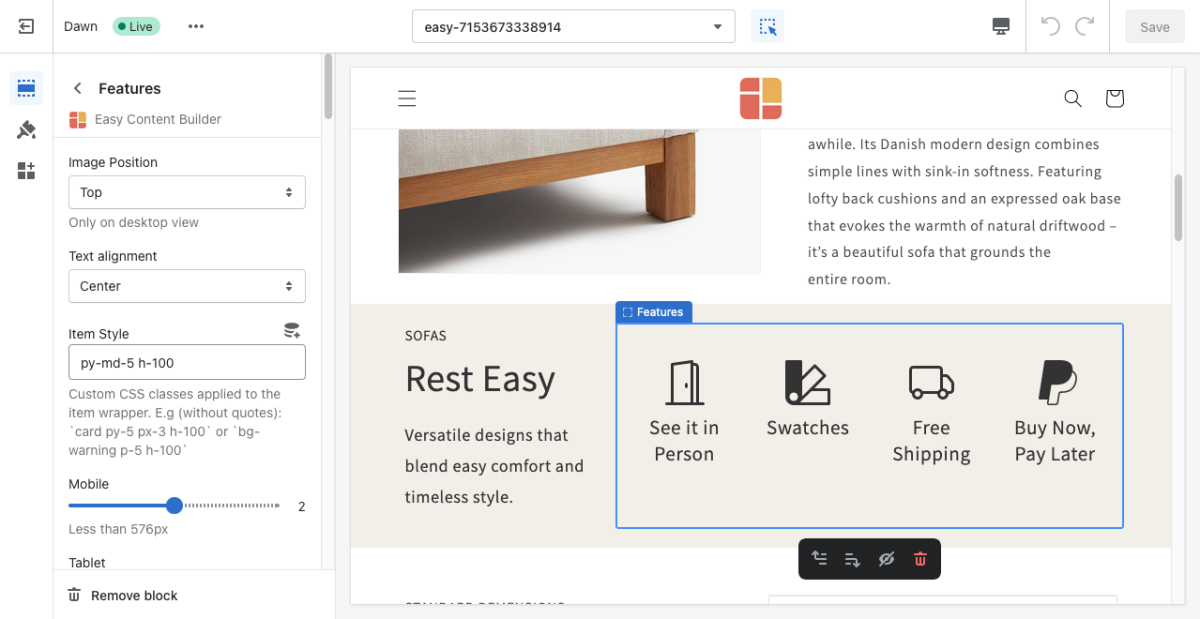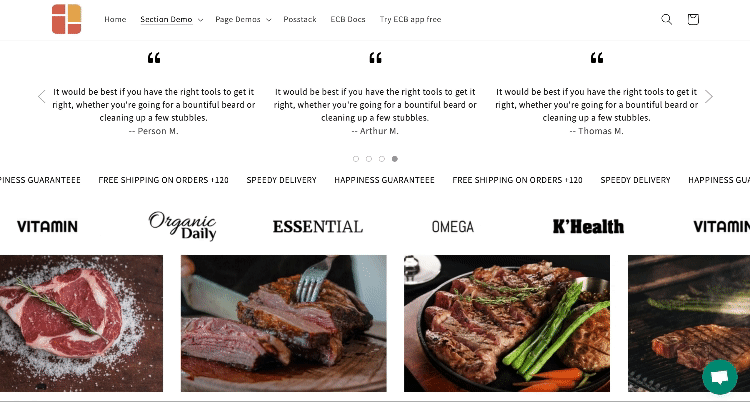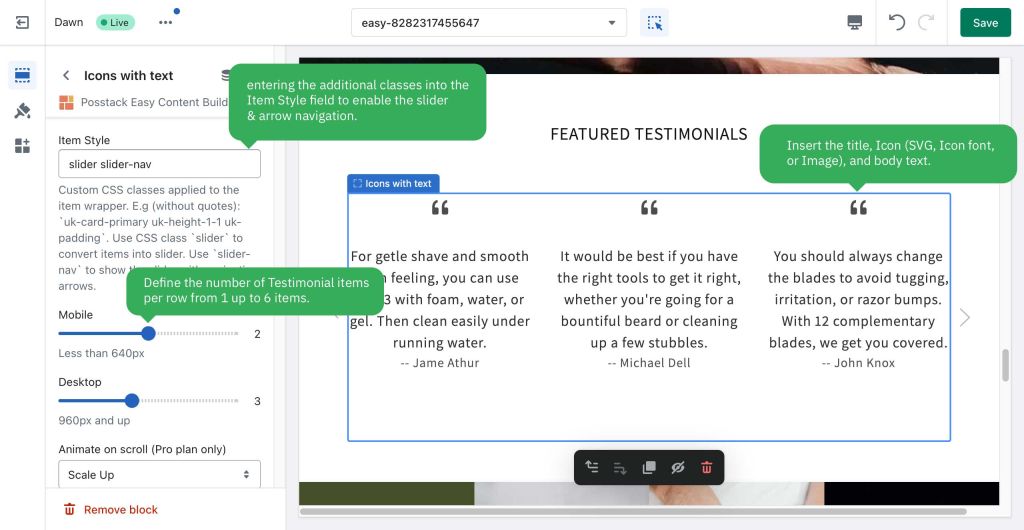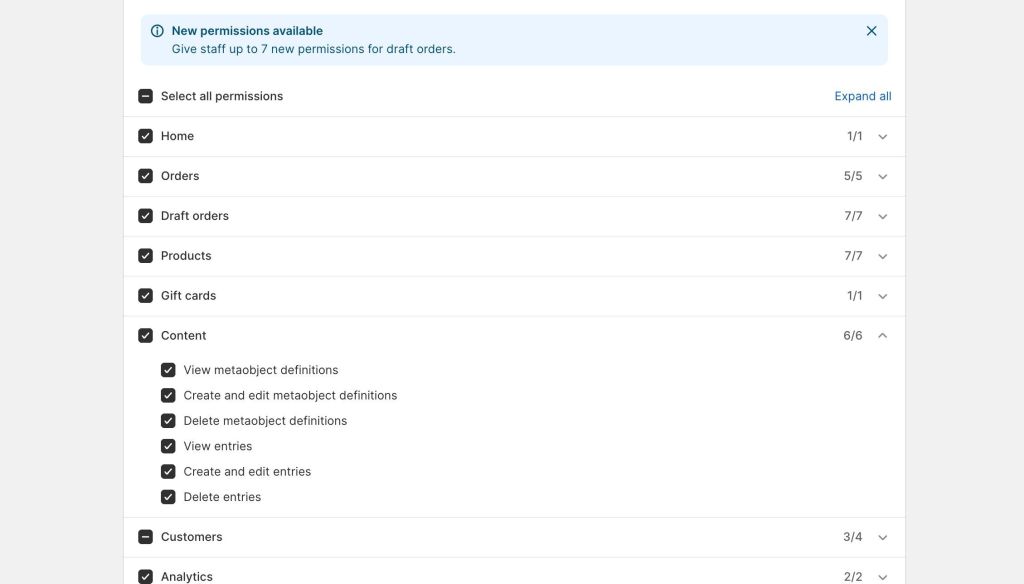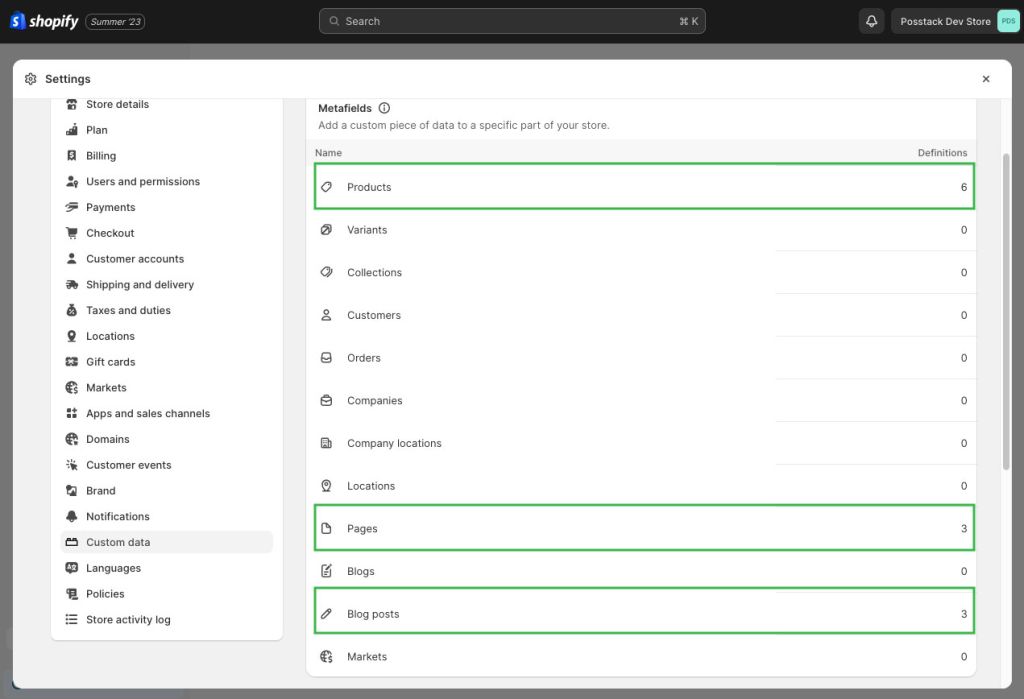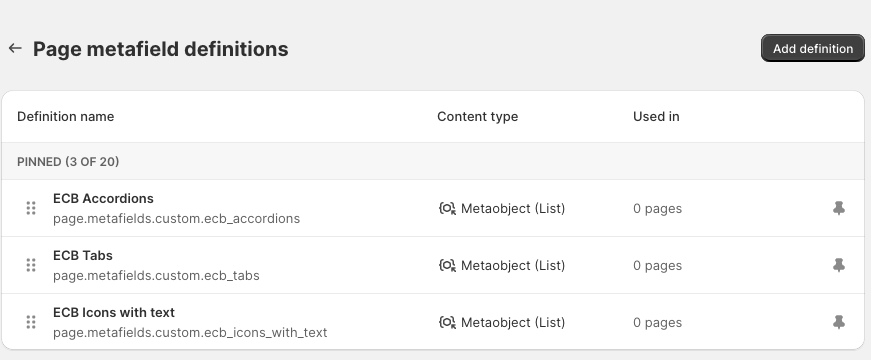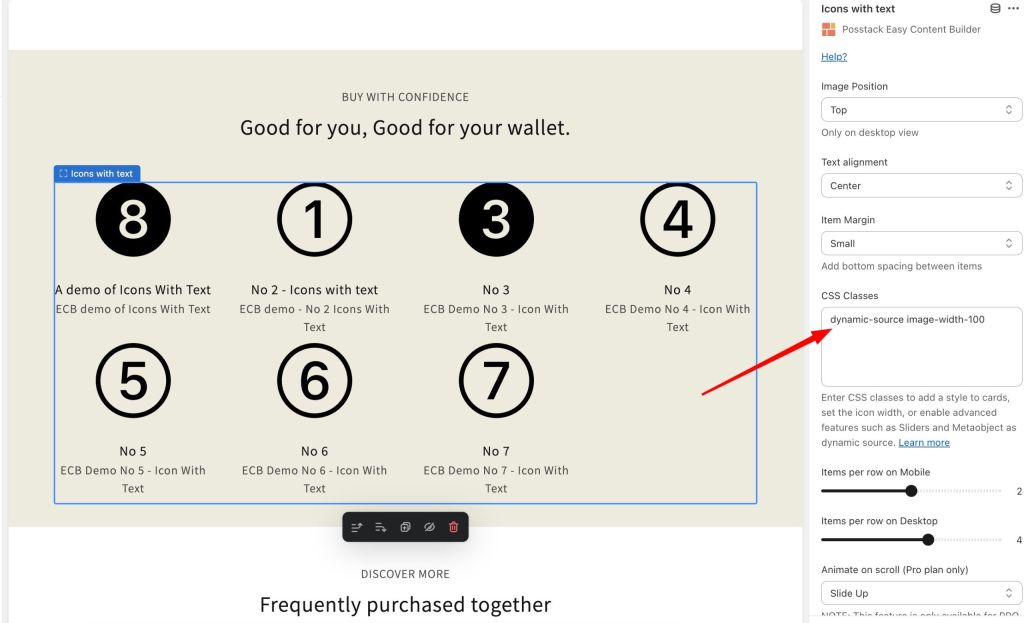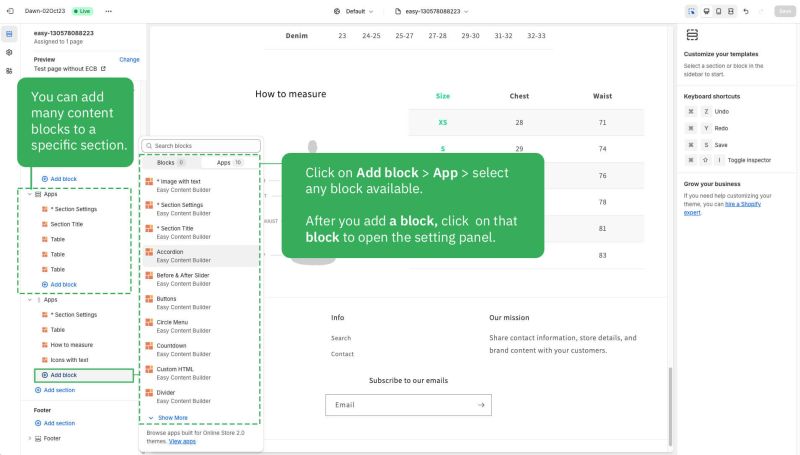Block: Icons With Text
What is the Icons With Text section perfect for?
You have various options to use the Icons With Text section for your Shopify themes:
- Trust badges: See an example here.
- Payment icons: See an example here.
- Shipping info: See an example here.
- Feature highlights: See an example here.
- Testimonial slider: See an example here.
- Logo Listing: See an example here or scrolling logo list:
Icons With Text settings
Icons With Text (previously Features block) helps you create separate content blocks (Each block comes with its heading, description, and icon). You can easily position the icon (left, right, center, or bottom) to pair with the wrapped text.
From the Shopify theme editor, click on Icons With Text (previously Features block) on the sidebar to view the details of settings.
| Section settings | Description |
|---|---|
| Image Position | Set the position of the icon (left, right, center, bottom) to pair with the wrapped text. Applied to desktop view only. |
| Text Alignment | Align all content elements to the left, right, or center. |
| Set the icon/image width | Enter image-width-100 (replace 100 with the desired value) to the CSS classes field.
NOTE: Once you define the width of the icon/image, make sure you configure the number of items per row on Mobile/Desktop, like the examples below: |
| CSS classes | // Enter Custom CSS classes:
// Enable Auto-scrolling: To enable auto-scrolling (Perfect for Logo slider, scrolling announcement text, Testimonial slider, etc.), add the CSS classes below:
INFO: Currently, the metaobjects used as a dynamic source can be used on 3 page types: product page, store page, and blog post page. NOTE: The Slider, Auto-scrolling, and Metaobject features are only available for the PRO plan. To add multiple classes, enter the classes with space between them. |
| Items per row on Mobile | Set the number of featured content blocks displayed per row on Mobile devices. |
| Items per row on Desktop | Set the number of featured content blocks displayed per row on Desktop devices. |
| Animate On Scroll | This feature is only available for the Pro plan. It lets you apply different types of animation to elements within each section as you scroll down the page. Learn more about scrolling animations here. |
| Item Title | Enter the title of each featured content block. |
| Icon | Upload the SVG Icon, Icon Font, or Image |
| Body | Add and style (bold, italic, add link) the text content that appears on each block. |
Scrolling announcement bar and infinite logo/image carousel.
How to create a scrolling logo list/text bar/image carousel:
- Step 1: Create a Section Settings to control the global settings of the slider (where you specify this section’s column layout, width, background color, etc.)
- Step 2: Create an Icons With Text section.
- Step 3: Open the Icons With Text configuration and insert the title/body text/icon (SVG, Icon font, or Image) depending on which content type you want to display.
- Step 4: enter these additional classes into the CSS Classes field depending on the scrolling style you want:
- Note: You can add multiple classes, type the classes with space between them.
- scrolling: scrolling from right to left.
- scrolling-r: scrolling from left to right.
- duration-10: Specify duration (in second) that the animation should complete one cycle. Replace '10' with your desired value.
- nowrap: showing text messages in one row (helpful for Scrolling important messages)
- overflow-hidden: scrolling items will be shown within the block's container.
- max-width-200: Set the items’ maximum width (replace 200 with your desired width).
- NOTE: If you do not set max-width-value, each image's maximum width is 280px by default. To show images bigger than 280px, you must specify both the image-width-value and max-width-value (input the value as you wish. Make sure image-width-value ≤ max-width-value.)
Below are a few examples of logo/text/image carousels we created for demo purposes:
- Scrolling announcement bar (full-width):
 Scrolling announcement bar (shown within a column container):
Scrolling announcement bar (shown within a column container):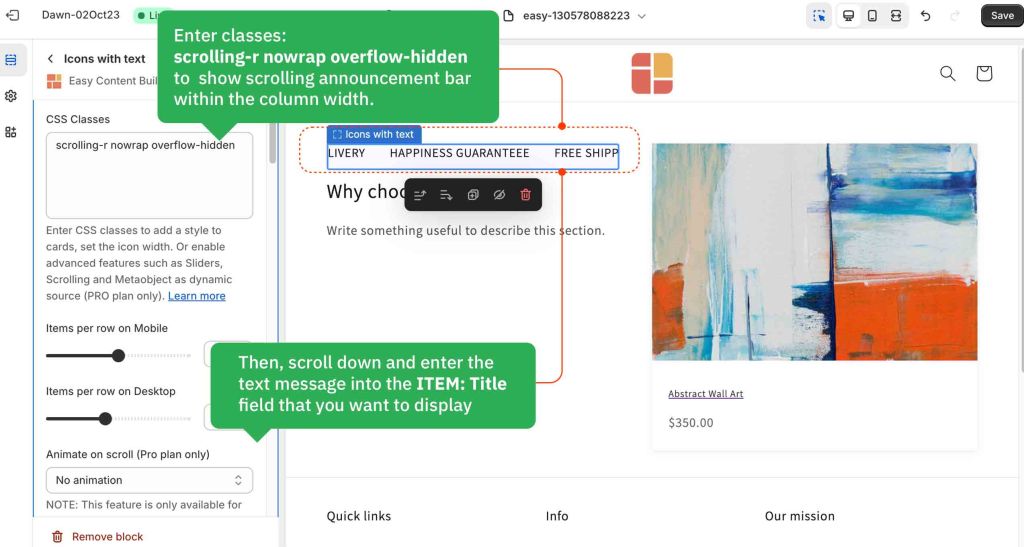
- Scrolling logo list:
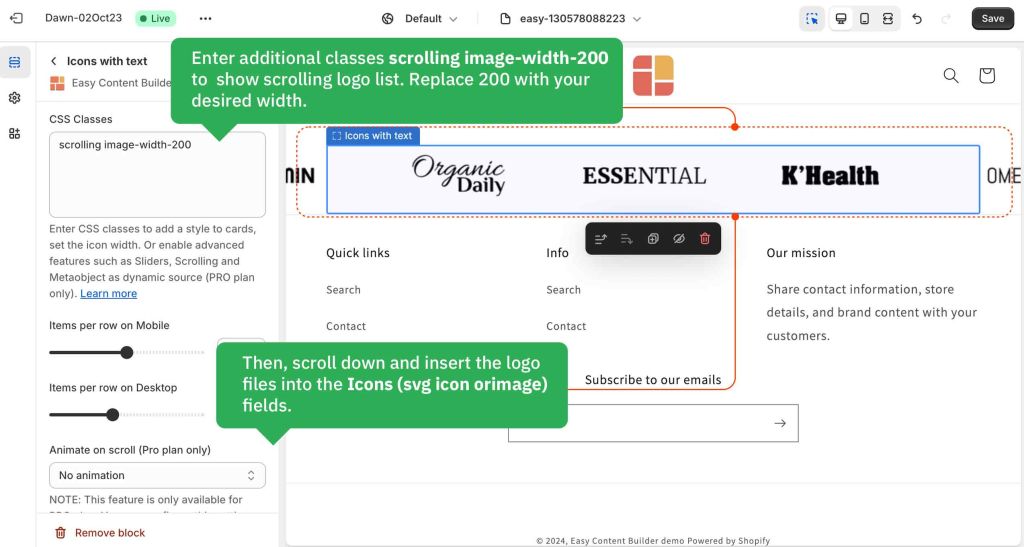
- Infinite image carousel:

Testimonial Carousel
You can use Icons With Text block to create a Testimonial carousel by entering these additional classes into the Item Style field:
- slider: to enable the carousel
- slider-nav: to enable the arrow navigation
How to create a Testimonial:
- Step 1: Create a Section Settings to control the global settings of the carousel (The whole block width, background color, etc.)
- Step 2: Create an Icons With Text section.
- Step 3: Open the Icons With Text configuration and insert the title, Icon (SVG, Icon font, or Image), and body text as you wish.
Note: You can define the number of Testimonial items per row from 1 up to 6 items (using the Mobile & Desktop configuration).
Below is an example of a Testimonial carousel that displays 3 items:
How to add SVG icons to Icons With Text
Upload SVG icons
Set the icon width
To adjust the icon's width, simply enter the extra class into the CSS classes field: image-width-100 (replace 100 with the desired value).
Change the SVG icon color
Here are steps to adjust the SVG icon's color:
- Step 1: Convert your HEX color to CSS filter property.
- Simply use this free tool, enter your HEX color format (e.g. #121212) to convert to CSS filter property. Then, copy the generated CSS filter result.
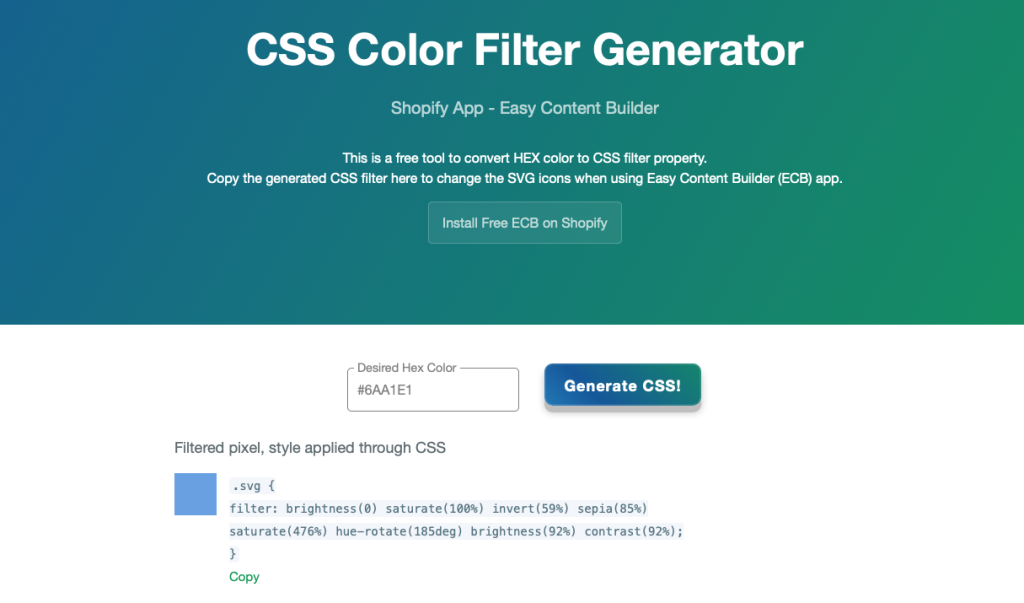
- Step 2: Navigate back to your Theme Editor > click on the App section containing the Icons With Text block where you want to change the SVG icons' color.
- Step 3: Paste the generated CSS filter property into the Custom CSS field. And hit Save.
How to create an Icons With Text metaobject
Step 1: Update Staff permissions
If your store has multiple staff members, make sure you assign the right permission for staff to work on the metaobjects.
- Otherwise, your staff can not add entries when working with the metaobjects.
Step 2: Create Metaobjects
- From your Shopify admin, navigate to Apps > Posstack Easy Content Builder > Custom Data.
- Click on Create next to the desired content type (Icons With Text, Tabs, Accordions). Once created, you should see the message Metaobject and Metafield created:
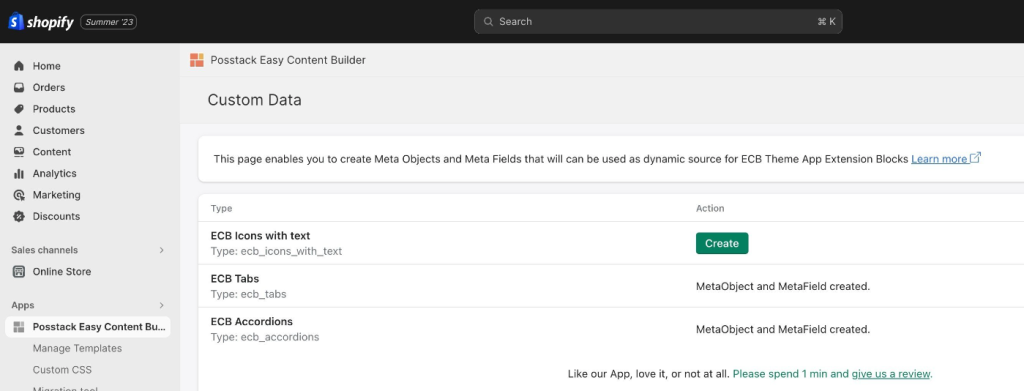
- To create an Instagram Feed/ Tiktok & Youtube Slider like this example, you simply create Icons With Text metaobject in this step.
- And all metafields associated with the above-mentioned metaobjects are automatically created too. You can check those metafields by following these steps:
- In your Shopify admin, click Settings > Custom data
- You should see 3 metafields Products, Pages, Blog Posts:
- Click on each metafield Products, Pages, or Blog Posts to see the metafield definitions:
Step 3: Create entries for the Metaobjects
- From your Shopify admin, select the part of your store that you want to add a metaobject to. For example, Products (Easy Content Builder now supports metaobjects for Products, Pages, Blog Posts).
- Click the name of a product you want to edit.
- In the Metafields section, click on the form field to add an entry (ECB Accordions, ECB Tabs, or ECB Icons With Text depending on which metaobjects you created in Step 2)
- Next, click Select Entry > Create New Entry and complete the fields for your entry. Once done, click Save.

- To create other entries, you repeat the exact steps by clicking Select Entry > Create New Entry. If you have already created entries, simply click the checkboxes to determine which entries will be displayed on your storefront. Here is an example of metaobject entries we created for demo purposes:
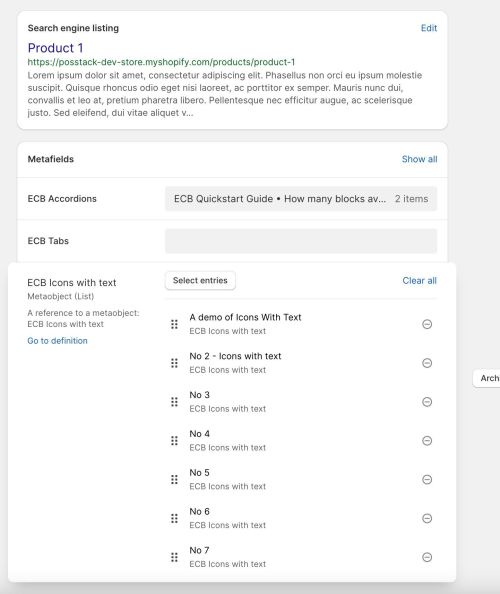
- Once done, click Save.
Step 4: Connecting metaobjects to your Online Store through dynamic sources
- From your Shopify admin, click Apps > Easy Content Builder
- From the Easy Content Builder dashboard, click Manage Templates.
- Then select the template that you want to edit and click Customize.
- From the Theme Editor, open the Icons With Text block where you want to edit. Then insert two classes into the CSS classes field: dynamic-source image-width-100 (replace 100 with the desired value for your icons' width).
Set the Heading font-weight
You may want to use additional classes to set the weight of the title to bold when needed. Add one of the classes below to the field 'Item Style':
- uk-title-bold: set the Heading's weight to bold (See the Icons with text demo with bold title)
- uk-text-bold: set the weight of both the Heading and body text to bold
Apply a different color to text element
You can also use one of these classes to apply a different color to text elements.
- uk-text-muted: Add this class to mute text.
- uk-text-emphasis: Add this class to emphasize text.
- uk-text-primary: Add this class to emphasize text with the primary color.
- uk-text-secondary: Add this class to emphasize text with the secondary color.
- uk-text-success: Add this class to indicate success.
- uk-text-warning: Add this class to indicate a warning.
- uk-text-danger: Add this class to indicate danger.
Create layout boxes with different card styles
You can add a specific card style to the Icons with text block by using these additional classes:
uk-card-primary uk-height-1-1 uk-padding
By default, you can apply three styles to cards:
- uk-card-default: create a visually styled box.
- uk-card-primary: emphasize the card with a primary color.
- uk-card-secondary: give the card a secondary background color.
Add other content blocks
You can add many content blocks to a section you've created. These content blocks will be displayed in different positions within the section, depending on the Desktop/Mobile Layouts you configure.
